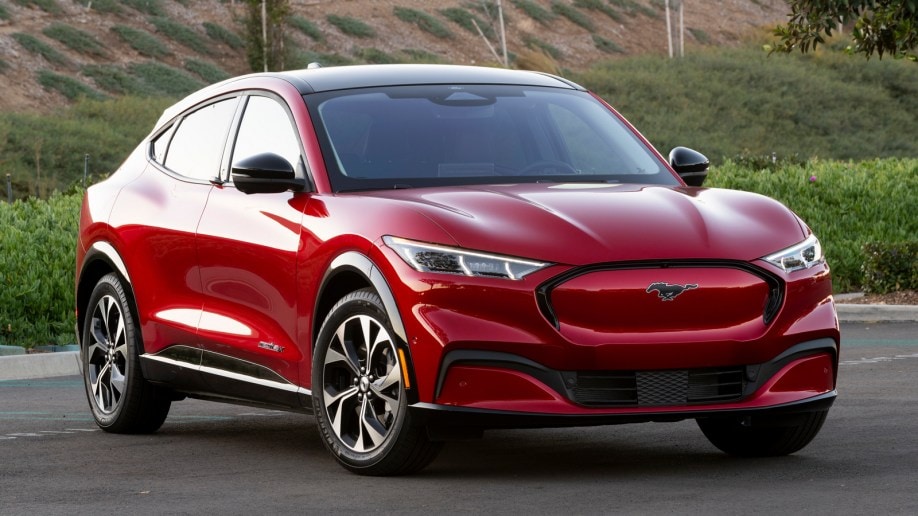In 2020, Americans bought more pickup trucks than non-luxury passenger cars – the first year that has ever happened. Americans’ growing love of pickup trucks, and carmakers’ ever-expanding list of truck offerings, get some of the credit for that. But another factor may ultimately prove more important: passenger cars are simply disappearing.
First, the data – According to Cox Automotive (Kelley Blue Book’s parent company), Americans bought 2,934,706 pickup trucks in 2020. They bought just 2,831,053 non-luxury passenger cars. SUV sales dwarfed both numbers, with 5,977,973 buyers taking home a new sport-utility or crossover.
The trend is unlikely to reverse in 2021. Kelley Blue Book’s own quarterly Brand Watch study, which examines more than 12,000 car shoppers to track what’s driving their purchasing decisions, recently found that more shoppers considered buying a pickup truck than a car for the first time ever in the fourth quarter of 2020.
Second, the likely reasons — The number, and variety, of pickup trucks available to American car shoppers has expanded dramatically in recent years.
More Trucks are Arriving
The full-size pickup is well-served with its traditional competitors; with the Ford F-150 and Chevy Silverado/GMC Sierra twins still competing for the sales title (the Ford usually wins, unless you count GM’s two trucks, which are almost identical, as a single model). The Ram lineup, Toyota Tundra, and Nissan Titan each claim enough sales to stay competitive.
Even those who want a performance car to brag about can choose a truck now – the dogfight between Ram’s 702-horsepower TRX and Ford’s desert racing marvel of suspension technology, the Raptor, is only heating up.
The new year will see more new additions to the midsize truck market. Hyundai is expected to reveal its first pickup, the Santa Cruz, before year’s end.
Passenger Cars are Disappearing
Cars, meanwhile? They’re going away.
There’s a veritable graveyard of non-luxury passenger cars that have disappeared from the market in just the last three years. The Chevy Cruze, Impala, and Sonic. Buick LaCrosse, Regal, and Verano. Dodge Dart. Kia Cadenza and K900. Honda Fit. Ford Fusion. Volkswagen Golf. The list goes on.
In fact, Cox Automotive data show that last month, Ford’s best-selling car, for the first time ever, was the Mustang…because there aren’t any other Ford cars. The Ford Focus, Fusion, Taurus, and all its other sedans and coupes have all been discontinued. Only the Mustang, and the incredibly low-volume GT supercar, remain.
SUVs, meanwhile, have become America’s family car of choice. They are even, arguably, growing more car-like. The best-selling sport-utility in America in 2020 was the Toyota RAV-4, built on the same platform as the Corolla sedan and Prius electric vehicle. The second best-seller was the Honda CR-V, which, likewise, shares most of its underpinnings with the Civic sedan. And the 2021 North American Utility Vehicle of the Year was the Ford Mustang Mach-E, an all-electric crossover that shares as much DNA with sport sedans as it does with traditional off-road SUVs.
Electric Vehicles Will Accelerate the Trend
The arrival of electric vehicles on a large scale will likely accelerate the death of the non-luxury passenger car. Electric cars offer design opportunities that internal combustion-driven cars don’t, because most of their mechanical parts fit neatly under the floor, with no need for a traditional engine bay in the front. That has led designers to introduce many EVs that are functionally like small SUVs, making the most of their increased cabin space by foregoing the traditional cabin-and-trunk layout of passenger cars. By the end of 2021, we expect to see as many as 100 electric vehicles on the market. But they’ll tend to look more like the VW ID.4 or Hyundai Ioniq 5, both essentially small crossovers, than the more traditional Tesla Model 3.
Americans seem more attracted to trucks and SUVs than to passenger cars, as evidenced by the 2020 sales numbers. And the market is responding. Increasingly, that means, passenger cars are simply leaving the scene.
More: Class of 2022 New Cars, Trucks, and SUVs











